Vertigo: Understanding the Causes of Balance Dysregulation
Vertigo is more than just dizziness, it’s a sign that the body’s balance systems are out of sync. Understanding the causes of vertigo and balance dysregulation means looking beyond the inner ear to the entire network that keeps the body upright: the vestibular system, vision, proprioception, circulation, and autonomic control.

- Published on Oct 27th, 2025
Table of Contents
Have you ever had that feeling — where you’re standing perfectly still, but the whole world suddenly decides to tilt and spin around you?
That disorienting, almost frightening sensation is vertigo.
And for many people, it’s much more than just a quick dizzy spell, it’s a huge signal from your body that something is out of sync.
What’s Really Going On When the World Starts to Spin
Here’s the most important thing to understand:
Vertigo isn’t a disease, it’s a symptom.
It happens when your brain, the master controller of balance, starts getting mixed signals.
It’s doing its best to figure out where you are in space, but the data just doesn’t add up and the result is that wild illusion of movement.
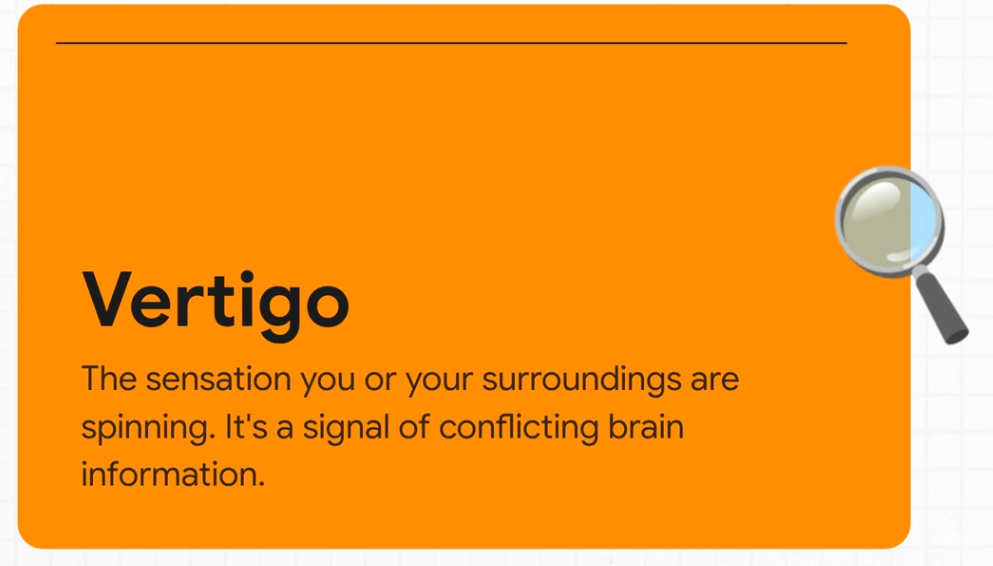
To keep us upright and stable, our brain relies on an incredible team of four systems:
The vestibular system in your inner ear, your personal gyroscope.
Your eyes, telling you where you are in the room.
Proprioceptive sensors in your muscles and joints, tracking body position.
The autonomic nervous system, ensuring your brain gets steady, oxygen-rich blood.
When this team works in harmony, you feel grounded.
But when there’s a disagreement that’s when vertigo strikes.
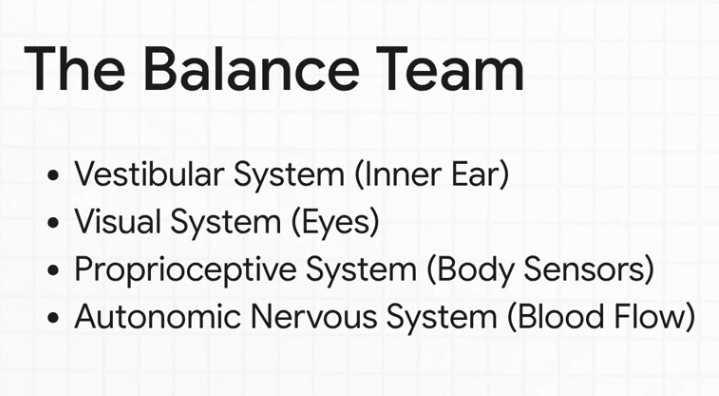
1
Trouble In The Inner Ear
The Story You’ve Heard
The Classic Inner Ear Explanation
When you hear “vertigo,” most people immediately think inner ear and for good reason.
The inner ear plays a huge role in balance.
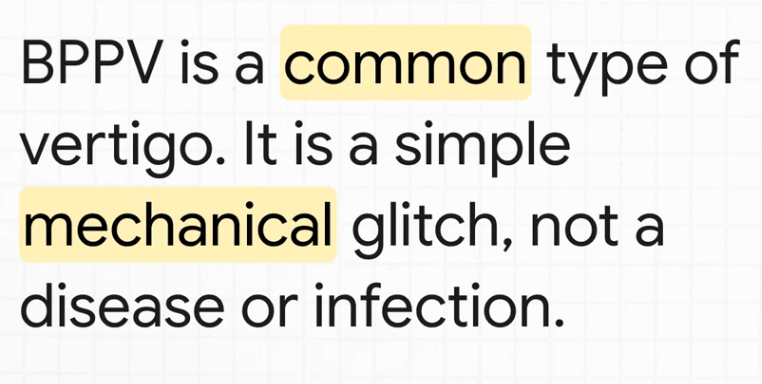

One of the most common causes is BPPV (Benign Paroxysmal Positional Vertigo).
Think of it as a simple mechanical glitch. It’s not an infection or a disease — just tiny parts in the wrong place at the wrong time.
Imagine little calcium crystals that are supposed to sit in one specific area of your inner ear.
For some reason, they break loose and start floating in the fluid-filled canals.
When you move your head, maybe rolling over in bed those rogue crystals create a tidal wave in the fluid, tricking your brain into thinking you’re spinning when you’re not.
It’s like having a loose stone rattling around inside a finely tuned instrument.


Another big culprit: inflammation.
After a viral infection, your balance nerve or inner ear can become inflamed, sending scrambled signals to your brain and creating that intense spinning sensation. (Smith et al., 2023 PubMed)

Here’s the key difference:
Vestibular neuritis → inflammation of the balance nerve only → vertigo is the main symptom.
Labyrinthitis → inflammation of both balance and hearing structures → vertigo plus ringing or hearing changes.
A small but crucial distinction.
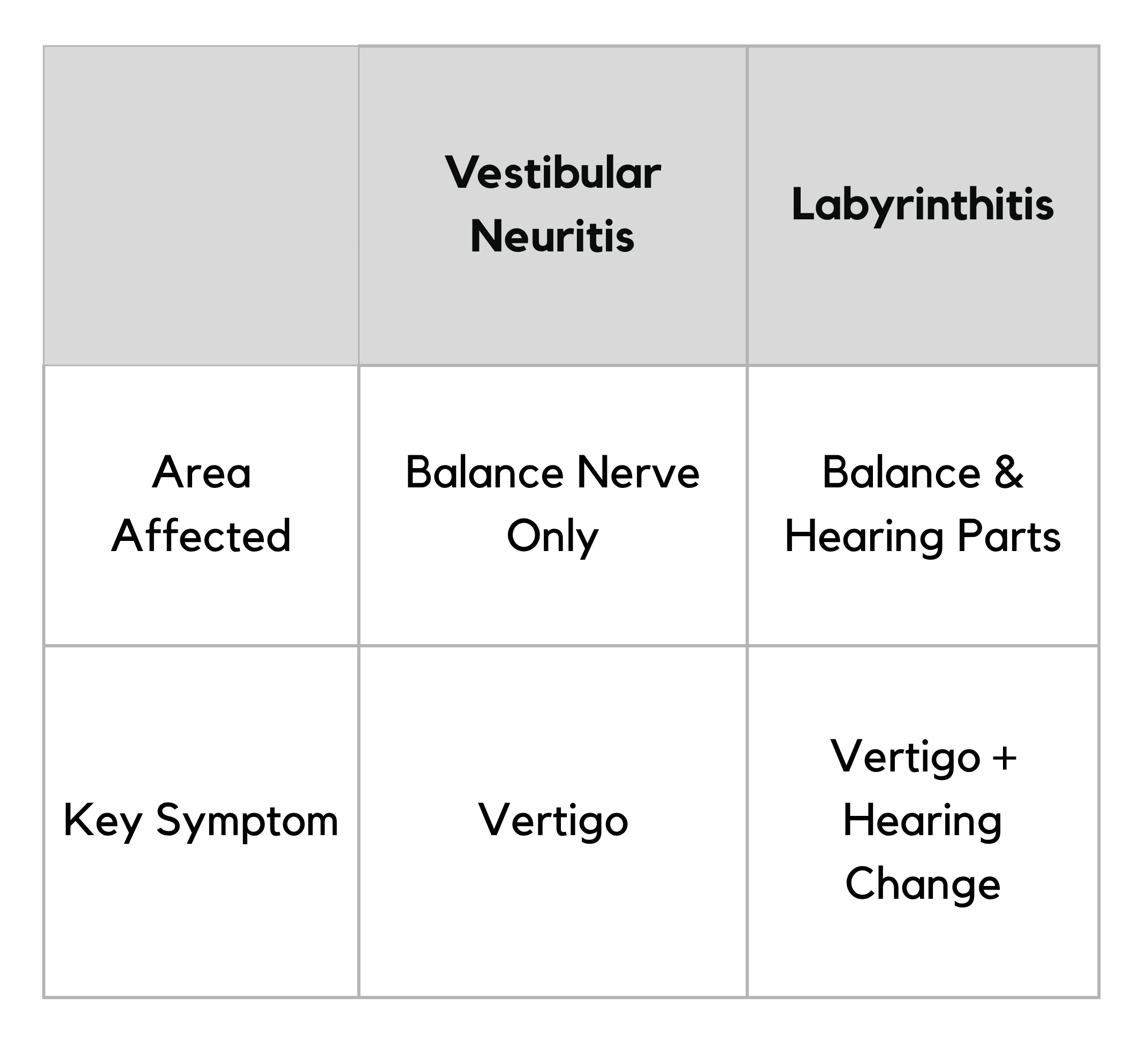

2
A Network Problem
Blood Flow & Nerves
What if the problem isn’t just in your ear?
Let’s zoom out.
For many people, vertigo stems from the nervous system’s struggle to regulate blood flow.
This is especially common in conditions like POTS, where the body has trouble managing heart rate and blood pressure. (Johnson et al., 2022 PubMed)
When you stand up, your autonomic nervous system should instantly adjust your blood pressure to keep oxygen flowing to your brain.
But if that doesn’t happen, blood pools in the lower body, momentarily starving the brain and bam, you feel that spinning sensation.
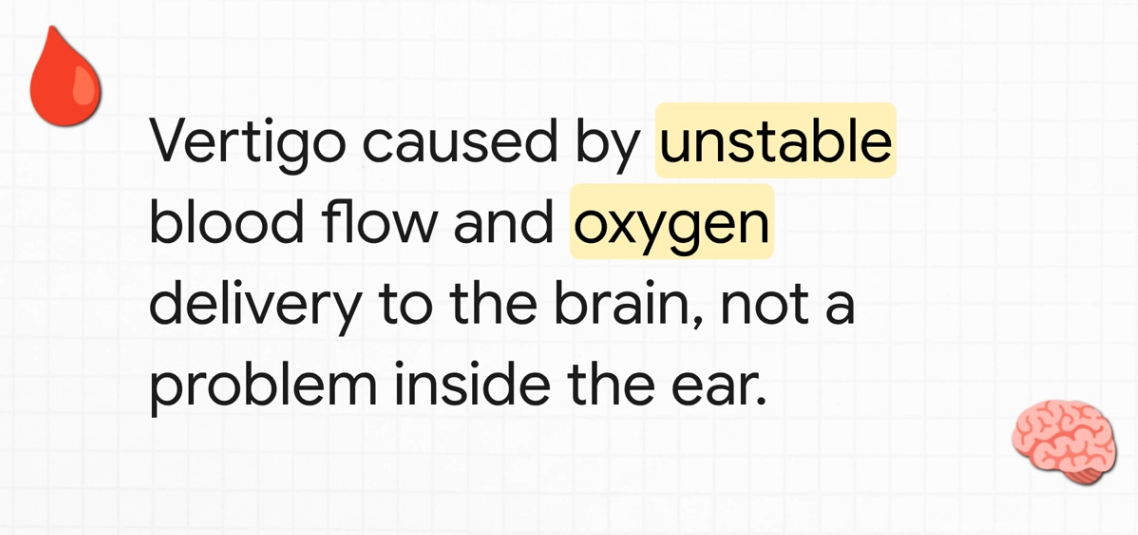
Think of a time you stood up too quickly and felt the world tilt for a second that’s your body’s alarm system, asking for recalibration.
Heat, dehydration, or stress can all trigger the same chain reaction.
These are signs of autonomic dysregulation, not ear crystals.
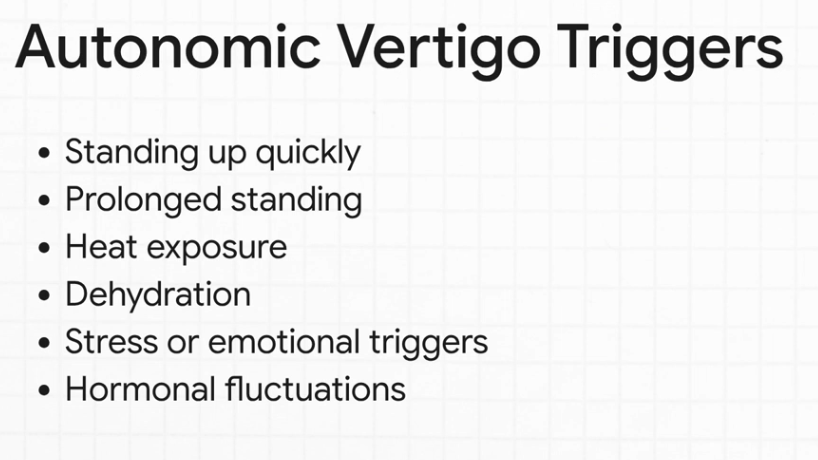
The Role of the Neck and Posture
Here’s another surprising culprit: your neck.
It’s packed with tiny sensors constantly reporting your head’s position to your brain.
If your neck is tight, misaligned, or compressed, those messages can conflict with what your eyes and inner ear are reporting and confusion equals dizziness.
Think about modern life:
We hold tension in our shoulders, stare down at screens all day, develop “tech neck.”
That chronic tension compresses muscles, nerves, and even arteries that feed the brain’s balance centers.
So yes your posture could be directly contributing to why you feel so off balance.
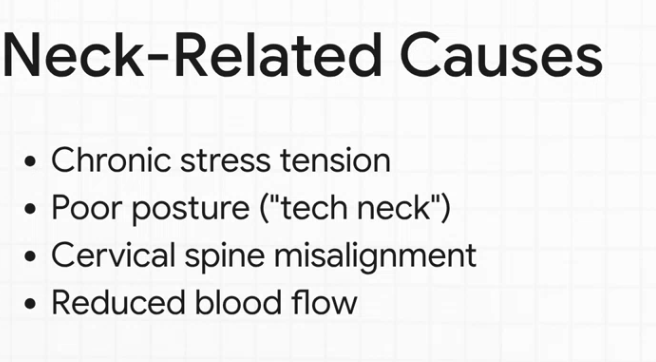
3
Gut-Brain-Stress
The Deep Drivers
We’ve covered mechanical and structural causes, now let’s go deeper.
Often, vertigo ties back to two foundational systems:
The gut and the stress response.
There’s a powerful communication highway between your gut and your brain.
What happens in your gut never stays there, it can directly affect the parts of your brain and inner ear responsible for balance.
If your gut lining is compromised (a “leaky gut”), inflammatory particles can escape into the bloodstream and travel throughout the body, including to the delicate tissues of the inner ear and vestibular nerve. (Park et al., 2024 BMC Neurol).
That means for some people, healing vertigo starts with healing the gut.

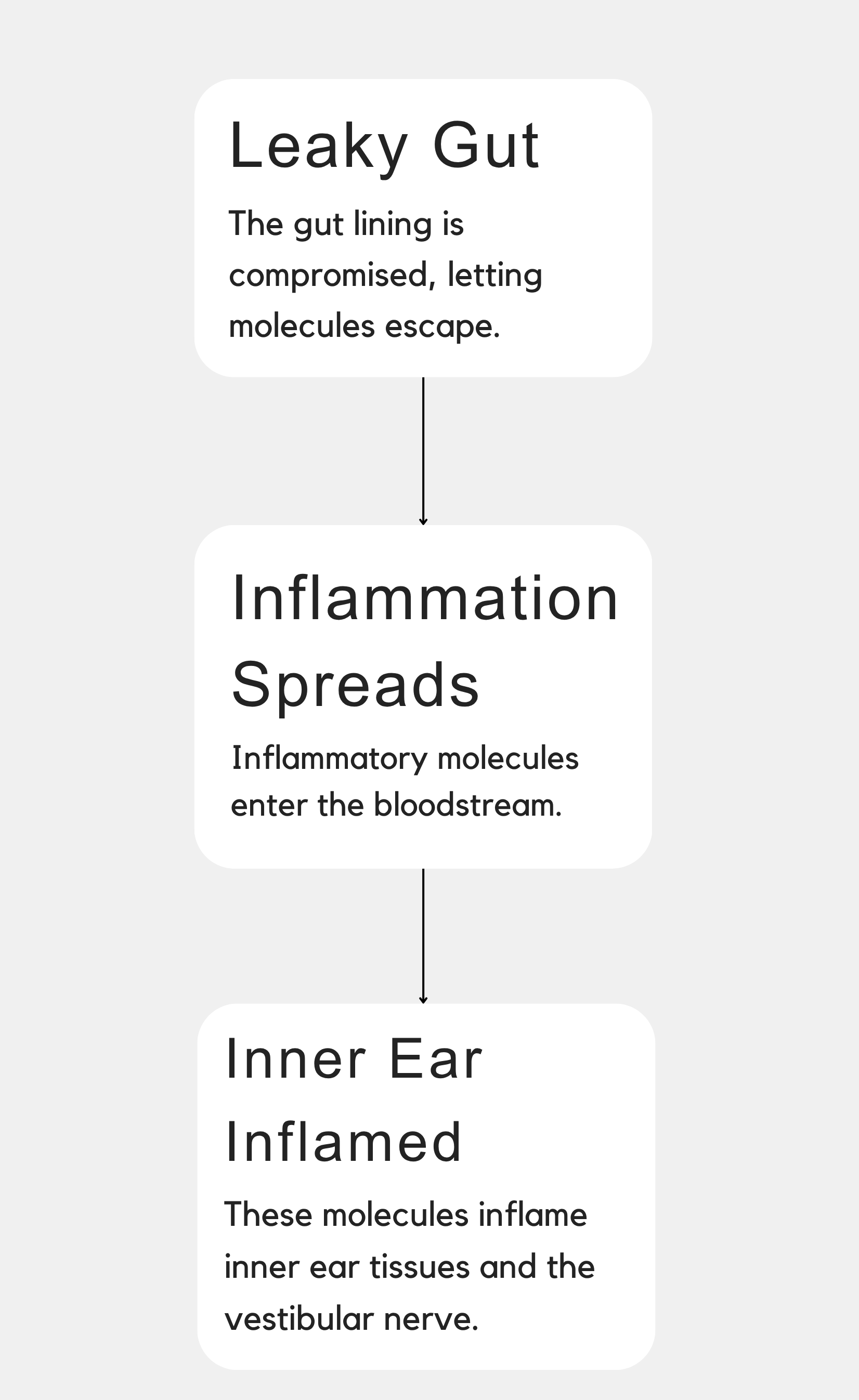
The Emotional Brain: The Limbic System
Finally, let’s talk about the brain’s emotional control center — the limbic system.
Chronic stress or past trauma can leave this system stuck in fight-or-flight mode.
Your body’s internal alarm stays switched on.
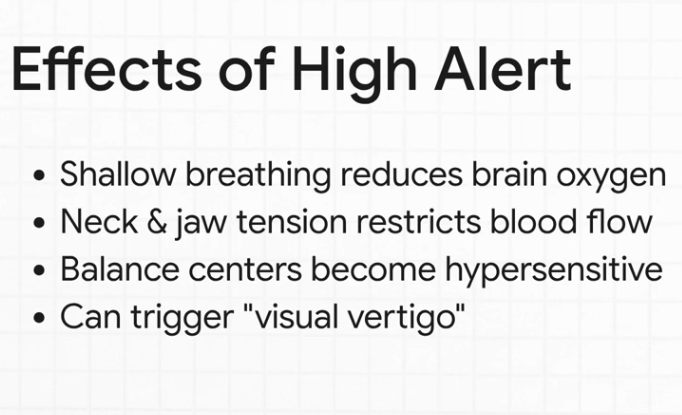
A brain that’s constantly on high alert is primed for vertigo:
Shallow breathing reduces oxygen to the brain.
Tight neck and jaw muscles restrict blood flow.
Balance centers become hypersensitive, overreacting to every little sensory input.
That’s why even scrolling your phone or watching a fast-paced movie can suddenly trigger dizziness. (E-RVS Journal).
4
System Harmony
The Common Thread
We’ve explored the ear, the neck, blood flow, the gut, and stress.
They might seem like separate issues but they’re all connected by one theme: system-wide dysregulation.
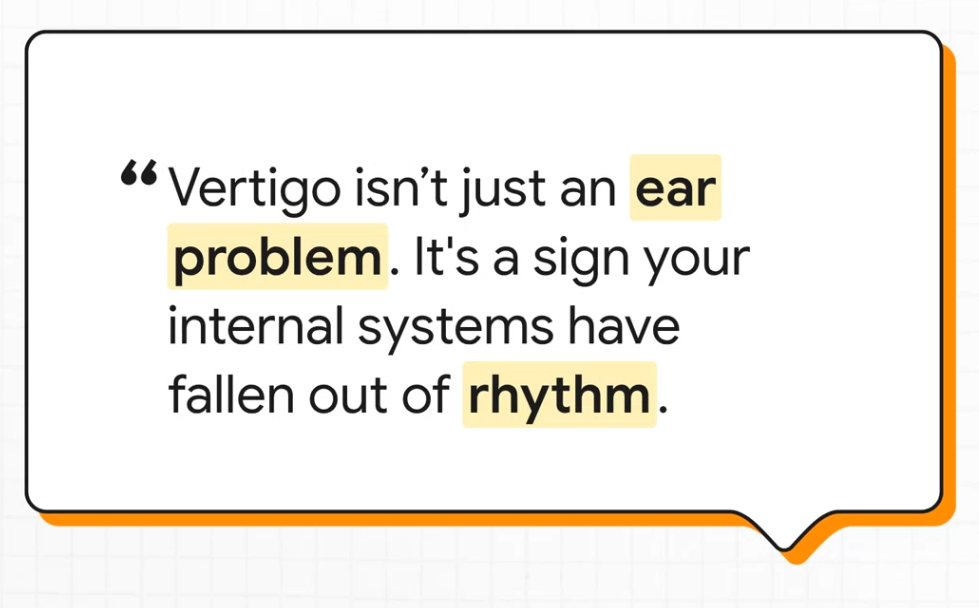
Whether it’s an overactive stress response, inflammation, poor gut-brain signaling, low cellular energy, or an overactivated emotional brain these are the pillars that, when unstable, cause your world to spin.
“It’s not about one broken part, it’s about a whole system that’s lost its rhythm.”
Vertigo is your body sending a loud, clear message:
It’s time to restore harmony.
Finding Your Way Back to Balance
And that’s the empowering part, this doesn’t have to be a life sentence.
By calming the nervous system, reducing inflammation, and restoring healthy communication between your brain and body, you can guide yourself back to balance.
So maybe the question isn’t just “How do I stop the spinning?”
The deeper question is:
“Where does my unique journey to restoring inner balance and harmony truly begin?”
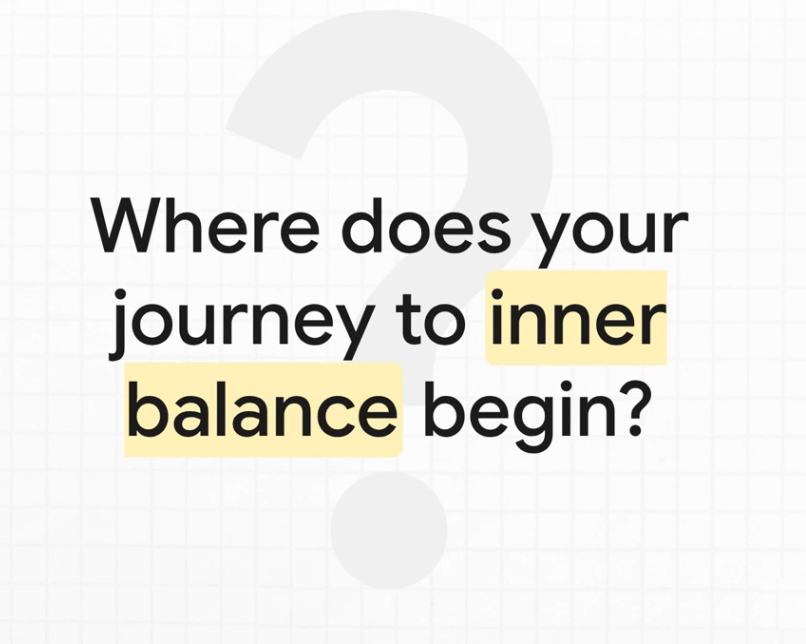
Do you Have Dysautonomia?
Take our quick and comprehensive symptom assessment to find out if your symptoms align with dysautonomia and receive personalized insights.
Frequently Asked Questions
What exactly causes vertigo?
Vertigo occurs when the brain receives conflicting information from balance systems—the inner ear, eyes, muscles, and autonomic nervous system—creating the illusion of motion.
What’s the difference between BPPV, vestibular neuritis, and labyrinthitis?
BPPV is caused by displaced calcium crystals in the inner ear. Vestibular neuritis involves inflammation of the balance nerve, while labyrinthitis affects both balance and hearing (Smith et al., 2023 PubMed).
Can blood flow problems trigger vertigo?
Yes. When the autonomic nervous system fails to stabilize blood pressure and circulation, as seen in POTS, the brain can briefly receive less oxygen, causing dizziness (Johnson et al., 2022 PubMed).
How does posture or neck tension relate to dizziness?
Tight or misaligned neck muscles can distort proprioceptive signals or restrict blood flow, confusing the brain’s sense of balance.
Is there really a link between gut health and vertigo?
Research shows that gut inflammation and microbiome imbalance can send inflammatory signals to the brain and vestibular nerve, affecting balance (Park et al., 2024 BMC Neurol).
Can stress alone cause vertigo?
Chronic stress activates the limbic system and fight-or-flight response, tightening muscles, altering breathing, and heightening motion sensitivity (Saman et al 2020 – Stress and the Vestibular System Link).
Can vertigo improve over time?
Yes. By addressing root causes – like inflammation, posture, gut health, and nervous system regulation. The body can often restore its natural sense of balance.

